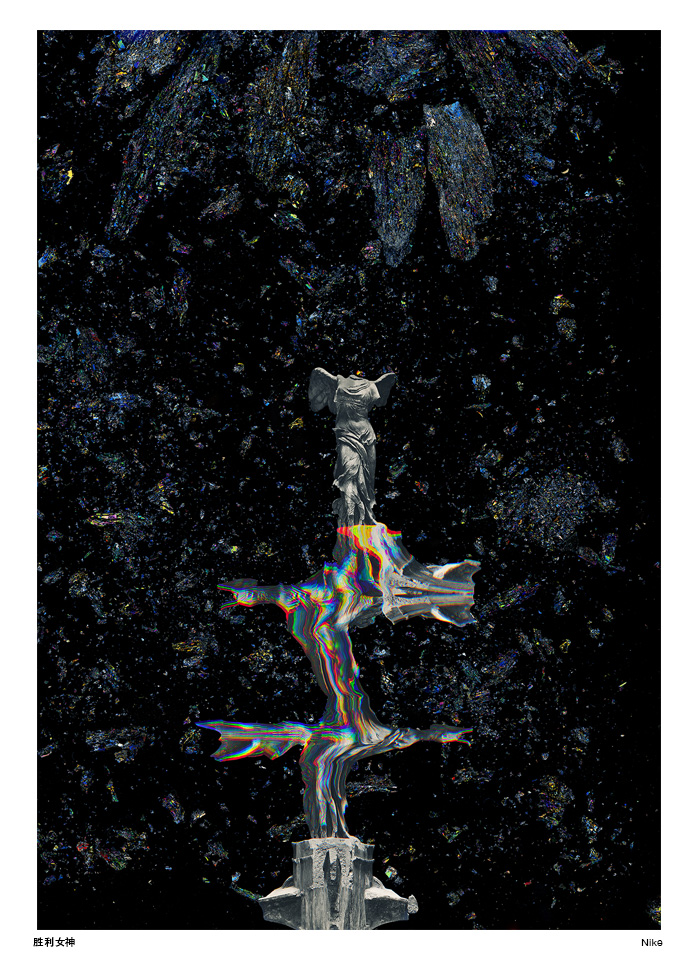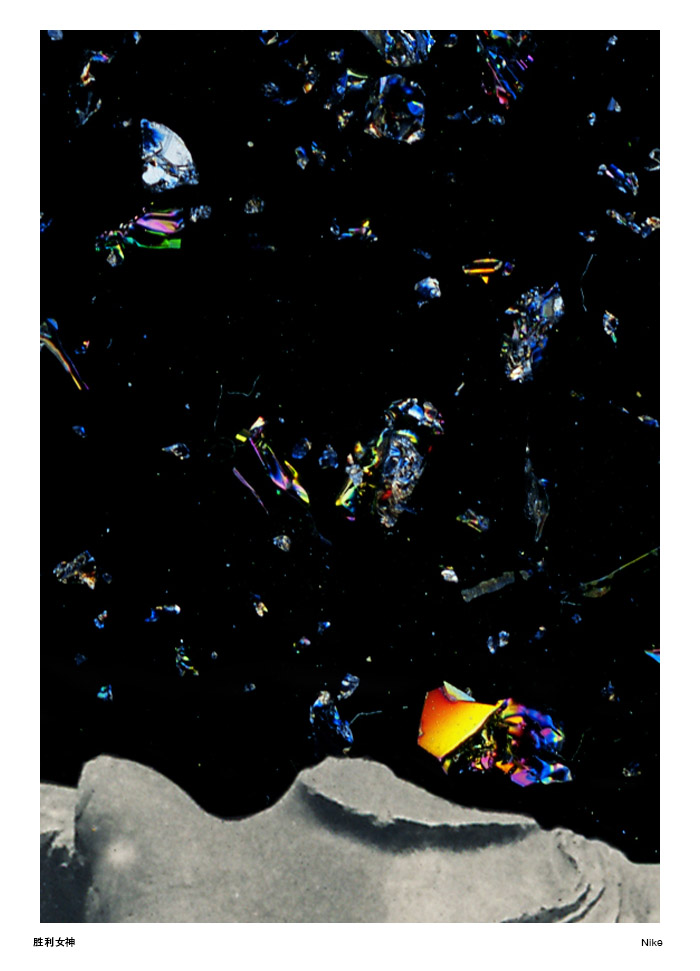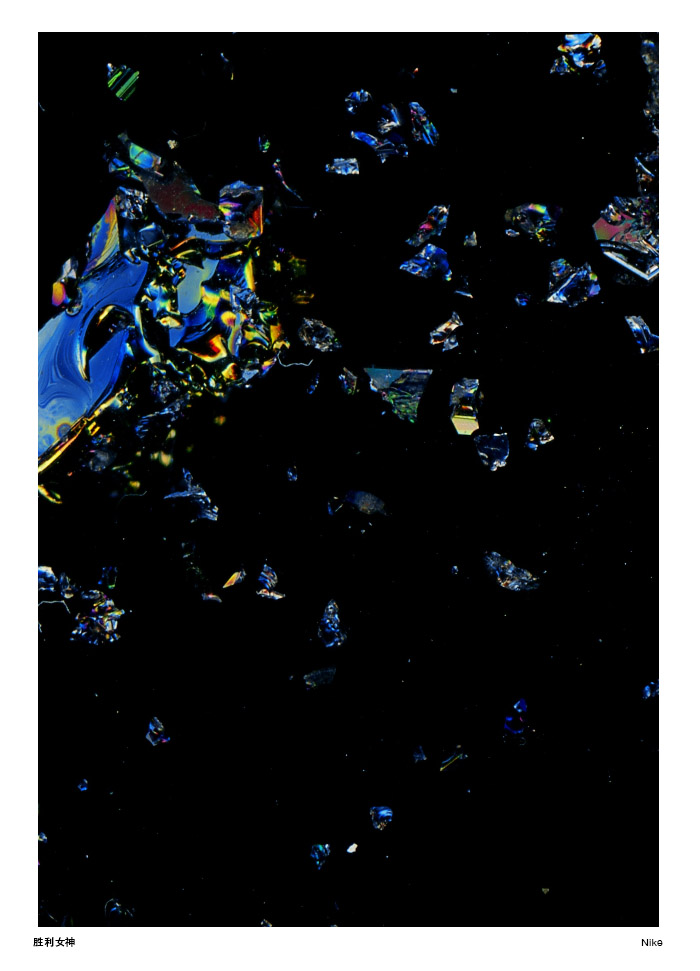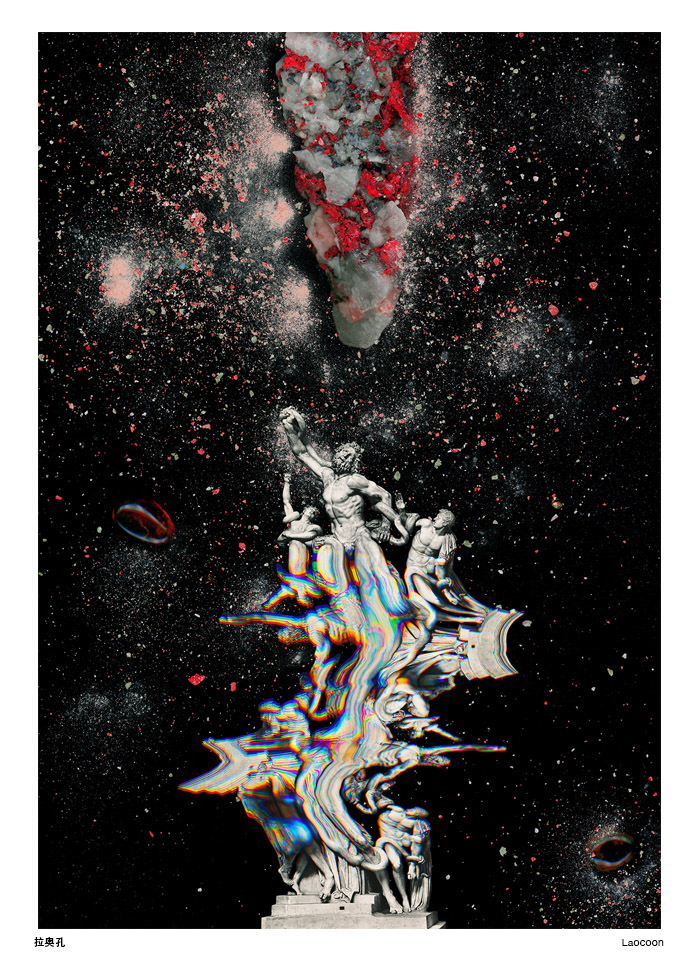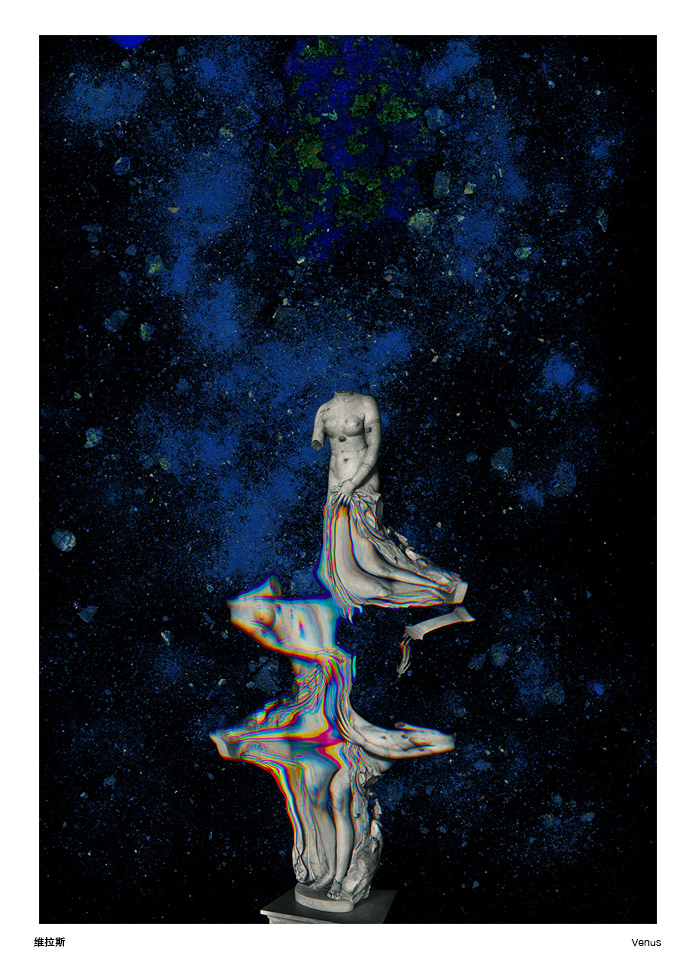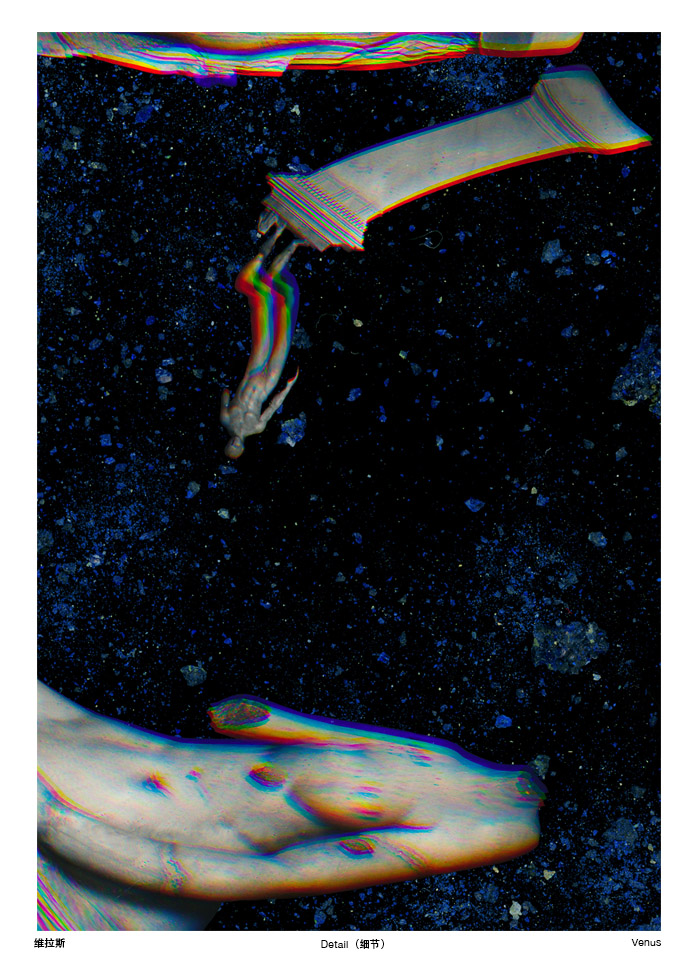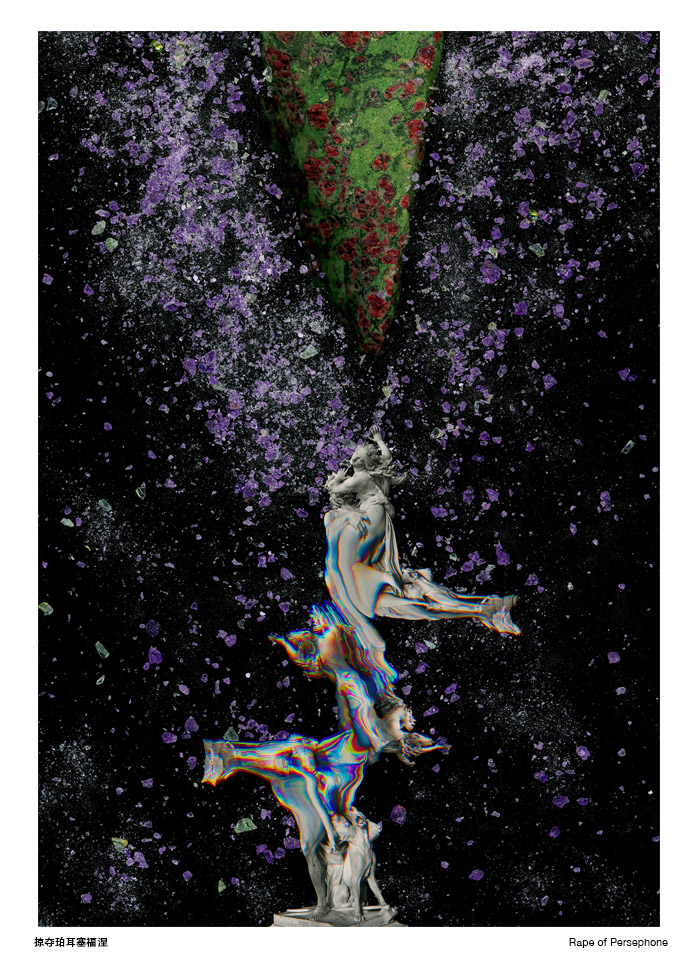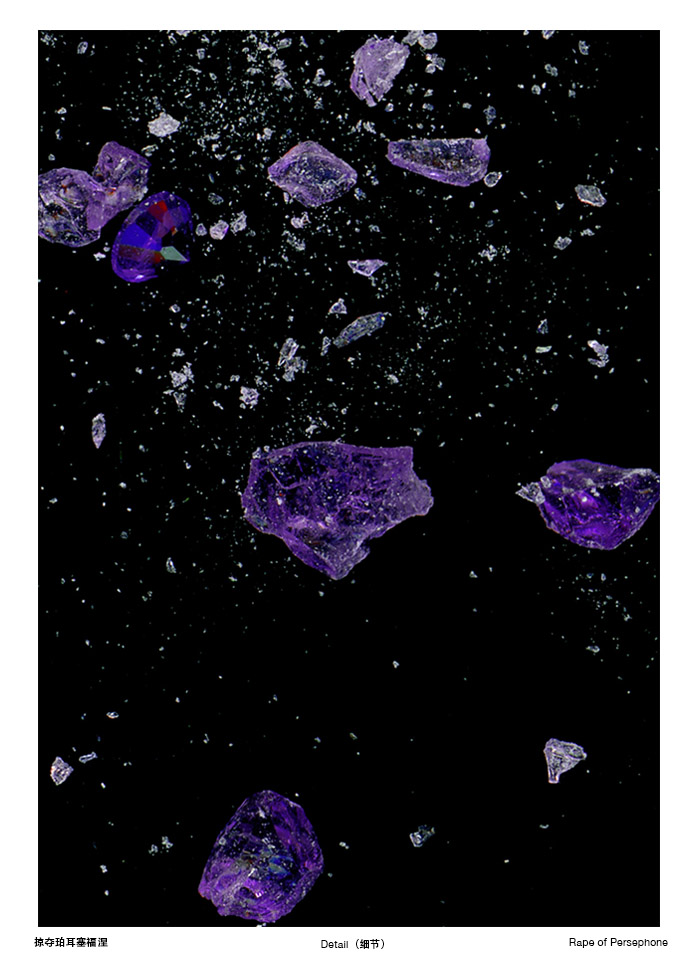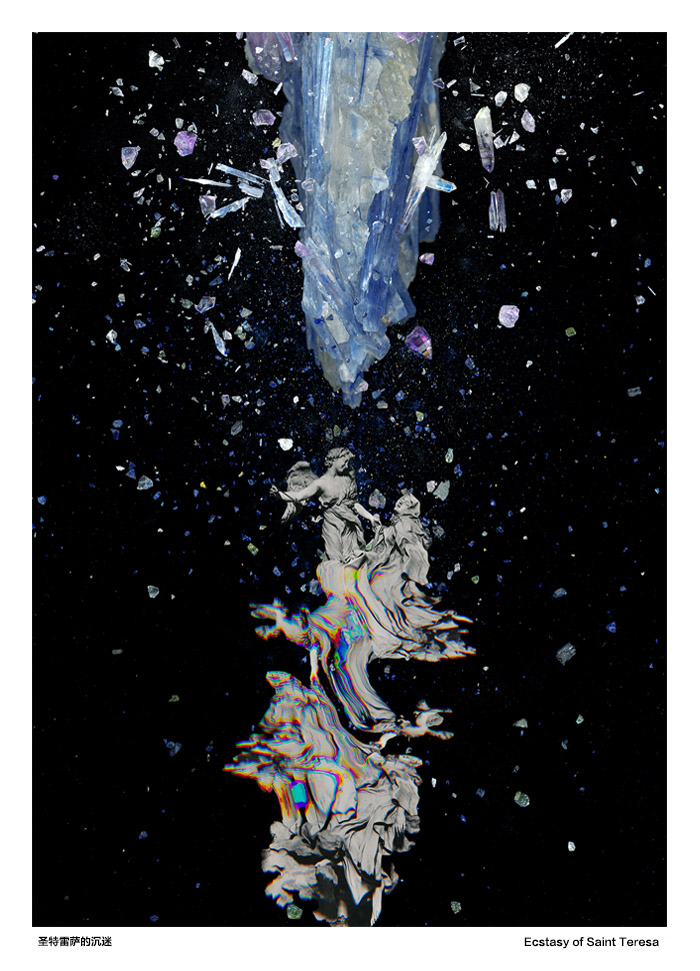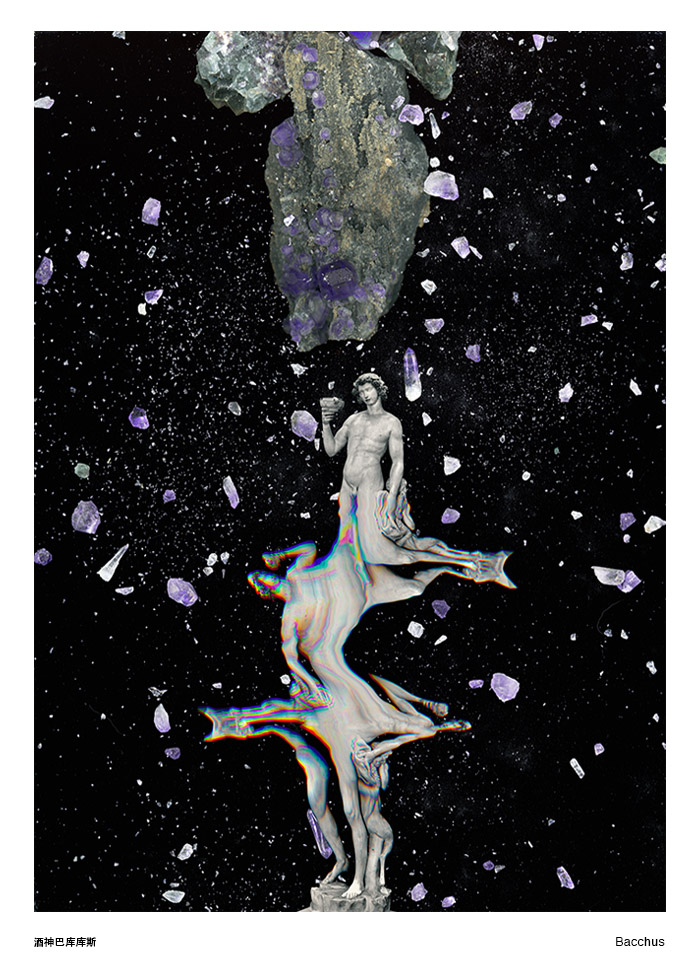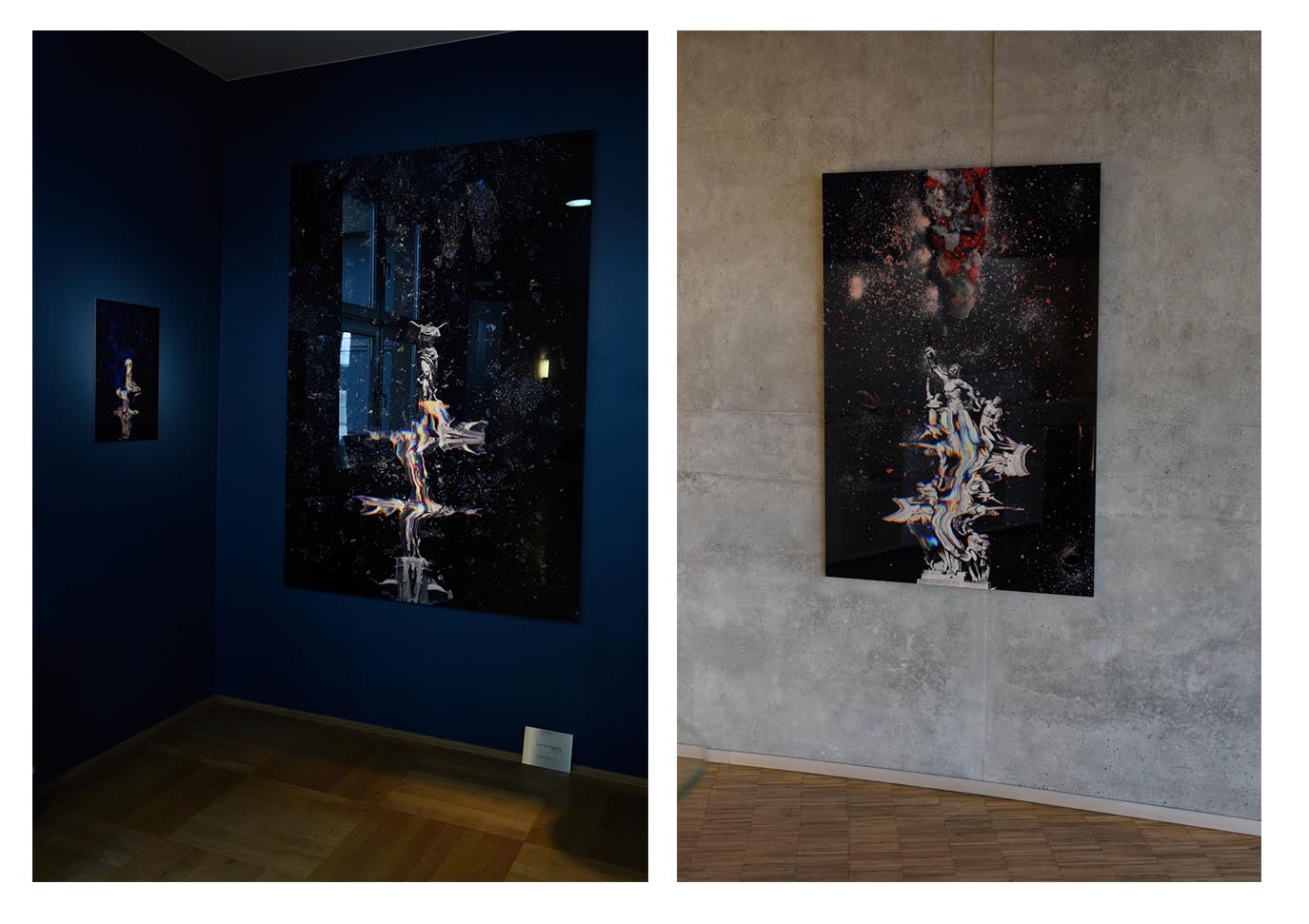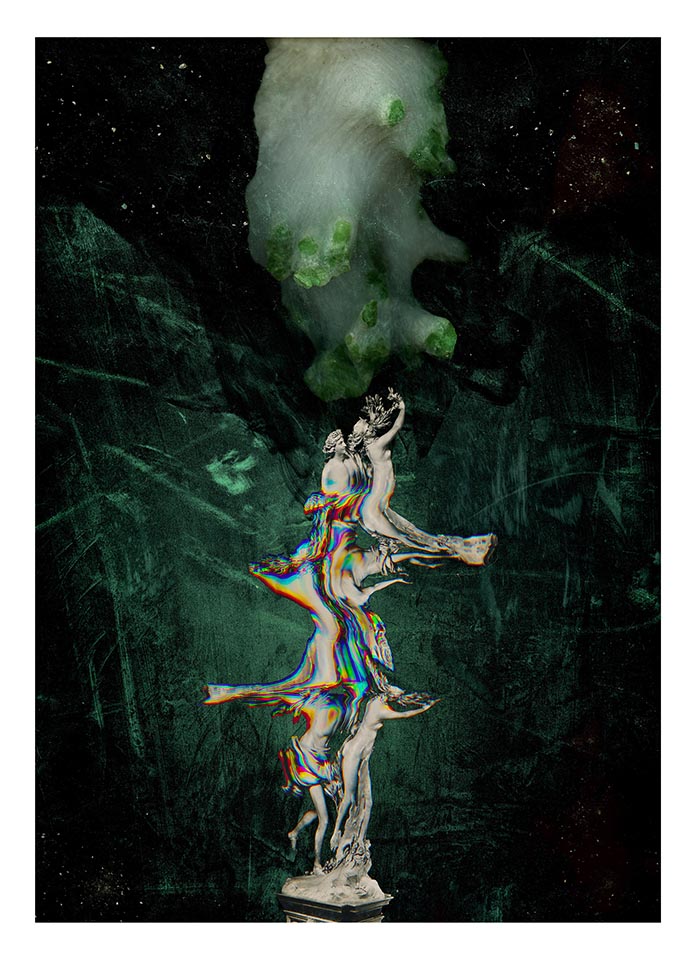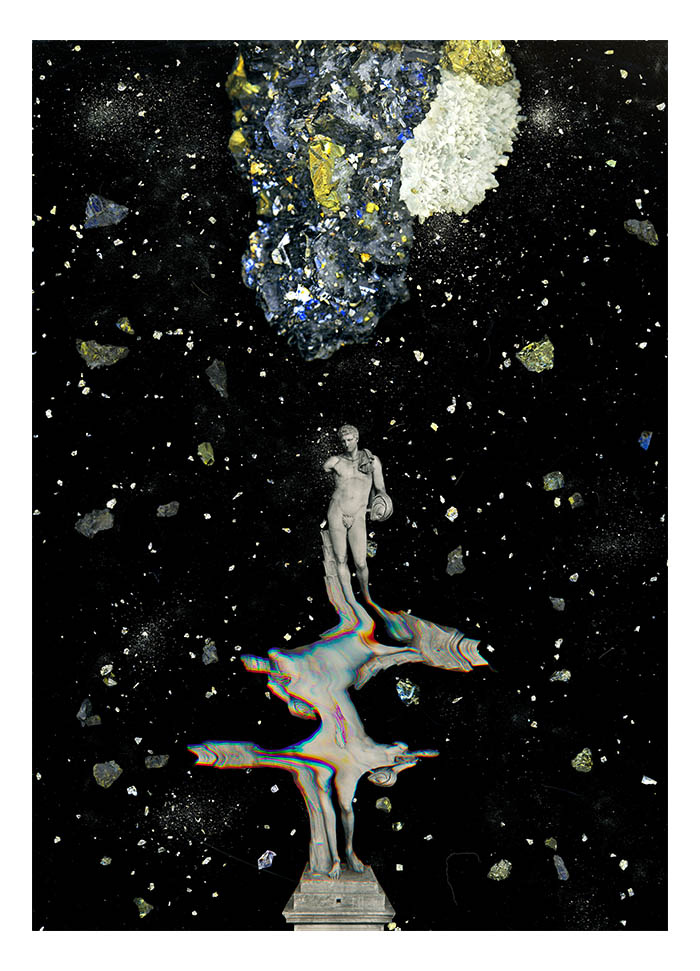达摩克利斯之石
前景层,都放在画面较靠下部分。背景层在靠上的部分有暗暗地,似乎突然出现的大石头。
前景层是从明信片扫描出来的希腊雕塑。通过对机械扫描的主观介入,我赋予了这些雕像向上生长的动态。当我们视线顺着雕像向画面上方游走的时候,一组巨大的石块从天而降。仿佛命运忽然间横在了我们向上的升腾之中。而神,人,与命运的关系正是希腊从哲学到戏剧到艺术一个永恒的主题。
如达摩克里斯之剑,它永远悬在每个人的头上,即使诸神也逃脱不了。随着时间的流逝,我们在慢慢向着最后的命运靠拢,或者命运突然想我们砸来。面对命运我们仿佛永远都在反抗与顺从之间挣扎。这样的宿命感和危机感是我想传达的感受之一。
在佛家故事里,有这样一个比喻:芥子须弥,它是说把一座巨大的须弥山塞入一粒菜籽里,刚刚合适。而当我在创作背景层的时候,一粒粒细小的矿石仿佛形成了气象万千的星云,宇宙。扫描仪让我能捕捉到人眼所忽略的众多细节。我惊讶于这样一种微观与宏观间的奇妙联系。正如佛家的这则比喻。
尽管这是一个西方的题材,但是我在选择矿石时也引发了我很多更为宽泛的联想。
比如:如图片(维拉斯)里的矿石为Malachit,它在中文名叫“孔雀石”,寓意着一种“妻子幸福”。阿佛洛狄忒身为爱神,但却无法支配自己的权能。因为她总是被命运捉弄着得不到属于自己的真爱,所以人类也无法得到圆满的爱的幸福。
又如(拉奥孔)图像里的红色的石头-雄黄(Realgar),古代中国人确信这种矿石有驱蛇的功效。这张图内我还放置了有蜈蚣的琥珀,在画面里形成了更丰富的戏剧张力。
而另一张作品(普鲁东抢劫泊尔塞福尼 )上面部分的矿石是石榴石(Granat),也在述说着丰收女神泊尔塞福尼因吃了石榴而每半年必须返还冥界的故事。
“人们就是这样描绘历史天使的。他的脸朝着过去。在我们认为是一连串事件的地方,他看到的是一场单一的灾难。这场灾难堆积着尸骸,将它们抛弃在他的面前。天使想停下来唤醒死者,把破碎的世界修补完整。可是从天堂吹来了一阵风暴,它猛烈地吹击着天使的翅膀,以至他再也无法把它们收拢。这风暴无可抗拒地把天使刮向他背对着的未来,而他面前的残垣断壁却越堆越高,直逼天际。这场风暴就是我们所称的进步。” ——本雅明《历史哲学论纲》第九,《启迪》
Stone of Damocles
The foreground objects are placed on the lower part of the picture. On the upper parts of the background, big stones appear abruptly in the darkness. The foreground object are Greek sculptures scanned from postcards. Through my subjective involvement during the mechanical scanning, I have given these statues the dynamics of growing. When our sight move along the statue upward, suddenly, a henge of huge stones fall from heaven. It seems like our fate is suddenly crossing our fortitude to upward road. Fate of Gods, fate of human being are one of the eternal themes of Greek philosophy, drama and arts. The fate like the sword of Damocles, it is always hanging on everyone's head, even if the gods can not escape from it. We can struggling against it, but as time passes, we are slowly moving toward to our final fate, or fate suddenly is hurled onto us. Confronted with fate, we are always struggling between resistance and obedience. This sense of fatalism and crisis is one of the feelings I want to convey in this series.
In the story of the Buddha, there is such a metaphor: The whole Sumeru Mountain in a mustard seed. The metaphor tells to put the highest mountain Sumeru into a small seed, it is just fit. And when I created the background, I uses grains of ores. On the scanned pictures, the grains of ore looks likes magnificent and changing nebula and the universe. The scanner allows me to capture the details that are overlooked by the human eye. I am surprised at such a wonderful link between micro and macro world. It is in unison of the Buddha metaphor.
This series of works present a theme of western myth, but when I chose the ore, I have had broader association.
For example: in my work Aphrodite, the big ore on background is Malachit. The Chinese name of "malachite" means a "wife’s happiness." In the Greek myth, Aphrodite who in charge of Eros, can not use the advantage of her own power. Because she cannot obtain her true love by the teasing of her fate of tease, human being’s love and happiness cannot be sound as well.
In another work, Laocoon, the red ore is Realgar. The ancient Chinese believed that the Realgar can expel snake. In the background, I also placed ambers containing centipede, which forms more drama tension in the picture.
In the work Hades robbery Persephone, the big piece of ore is Granat. The the myth, Persephone as the Goddess of Harvest has to eat Granate and returns to underworld every six months.
"This is how one pictures the angel of history. His face is turned toward
the past. Where we perceive a chain of events, he sees one single
catastrophe which keeps piling wreckage upon wreckage and hurls it in
front of his feet. The angel would like to stay, awaken the dead, and
make whole what has been smashed. But a storm is blowing from Paradise;
it has got caught in his wings with such violence that the angel can no
longer close them. The storm irresistibly propels him into the future to
which his back is turned, while the pile of debris before him grows
skyward. This storm is what we call progress."
Walter Benjamin “Theses on the Philosophy of History”
